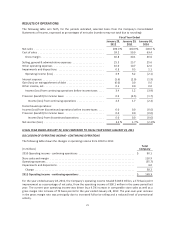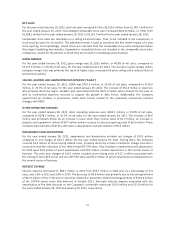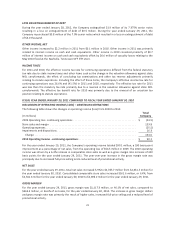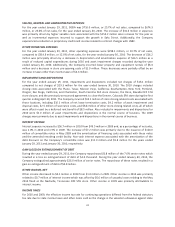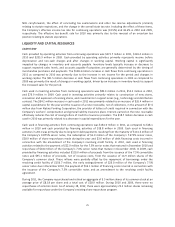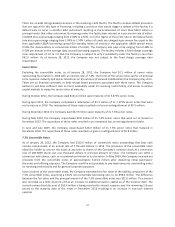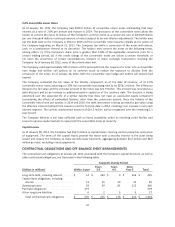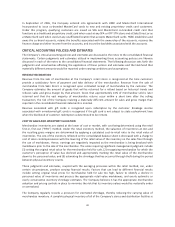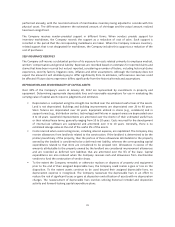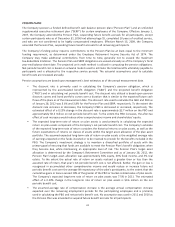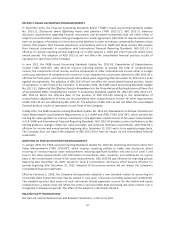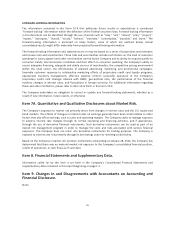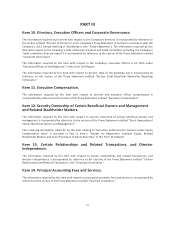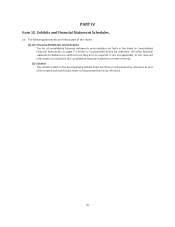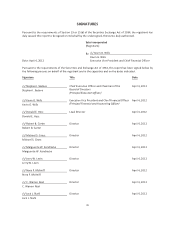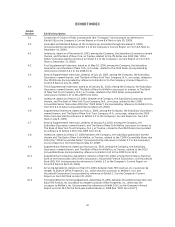Saks Fifth Avenue 2011 Annual Report Download - page 33
Download and view the complete annual report
Please find page 33 of the 2011 Saks Fifth Avenue annual report below. You can navigate through the pages in the report by either clicking on the pages listed below, or by using the keyword search tool below to find specific information within the annual report.performed annually, with the recorded amount of merchandise inventory being adjusted to coincide with this
physical count. The differences between the estimated amount of shrinkage and the actual amount realized
have been insignificant.
The Company receives vendor-provided support in different forms. When vendors provide support for
inventory markdowns, the Company records the support as a reduction of cost of sales. Such support is
recorded in the period that the corresponding markdowns are taken. When the Company receives inventory-
related support that is not designated for markdowns, the Company includes this support as a reduction of the
cost of purchases.
SELF-INSURANCE RESERVES
The Company self-insures a substantial portion of its exposure for costs related primarily to employee medical,
workers’ compensation and general liability. Expenses are recorded based on estimates for reported claims and
claims that have been incurred but not yet reported, considering a number of factors, including historical claims
experience, severity factors, litigation costs, inflation and other assumptions. Although the Company does not
expect the amount it will ultimately pay to differ significantly from its estimates, self-insurance reserves could
be affected if future claims experience differs significantly from the historical trends and assumptions.
DEPRECIATION AND RECOVERABILITY OF CAPITAL ASSETS
Over 40% of the Company’s assets at January 28, 2012 are represented by investments in property and
equipment. Determining appropriate depreciable lives and reasonable assumptions for use in evaluating the
carrying value of capital assets requires judgments and estimates.
▪Depreciation is computed using the straight-line method over the estimated useful lives of the assets.
Land is not depreciated. Buildings and building improvements are depreciated over 20 to 40 years.
Store fixtures are depreciated over 10 years. Equipment utilized in stores (e.g., escalators) and in
support areas (e.g., distribution centers, technology) and fixtures in support areas are depreciated over
3 to 10 years. Leasehold improvements are amortized over the shorter of their estimated useful lives
or their related lease terms, generally ranging from 10 to 20 years. Costs incurred for the development
of internal-use software are capitalized and amortized over 3 to 10 years. Generally, there is no
estimated salvage value at the end of the useful life of the assets.
▪Costs incurred when constructing stores, including interest expense, are capitalized. The Company may
receive allowances from landlords related to the construction. If the landlord is determined to be the
primary beneficiary of the property, then the portion of those allowances attributable to the property
owned by the landlord is considered to be a deferred rent liability, whereas the corresponding capital
expenditures related to that store are considered to be prepaid rent. Allowances in excess of the
amounts attributable to the property owned by the landlord are considered improvement allowances
and are recorded as deferred rent liabilities that are amortized over the life of the lease. Capital
expenditures are also reduced when the Company receives cash and allowances from merchandise
vendors to fund the construction of vendor shops.
▪To the extent the Company remodels or otherwise replaces or disposes of property and equipment
prior to the end of their assigned depreciable lives, the Company could realize a gain or loss on the
disposition. To the extent assets continue to be used beyond their assigned depreciable lives, no
depreciation expense is recognized. The Company reassesses the depreciable lives in an effort to
reduce the risk of significant losses or gains at disposition and utilization of assets with no depreciation
charges. The reassessment of depreciable lives involves utilizing historical remodel and disposition
activity and forward-looking capital expenditure plans.
31


